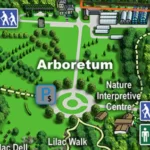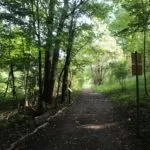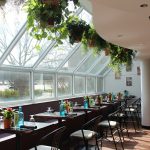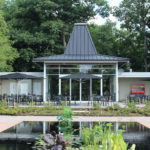| Membership | Price (+HST) |
|---|---|
| Single | $85/year |
| Single Plus | $120/year |
| Family | $130/year |
| Family Plus | $175/year |
| Contributing | $300/year |
| Supporting | $600/year |
| Sustaining | $1,000/year |
| Benefactor's Circle | $2,500/year |
| Director's Circle | $5,000/year |
| President's Circle | $10,000/year |
Botanical Bloodroot
By Jon L. Peter, Curator & Plant Records Manager
Bloodroot is a timeless spring ephemeral from the genus Sanguinaria, which comes from the Latin sanguinarius meaning bloody. Sanguinaria canadensis is the only species in this genus in the poppy family (Papaveraceae) and occurs naturally throughout central and eastern North America.
It is a species known by many vernacular names with bloodroot being the most familiar. It is also known as puccoon-root, red puccoon, Canada puccoon, bloodwort, pauson, redroot, and tetterwort. The reference to puccoon is derived from the Powhatan word poughkone which refers to several plants used by indigenous people for dyes.
This species is always a welcome addition in spring, whether in a garden setting or in our natural ecosystems. The rhizomatous, herbaceous perennial has a red-orange rhizome which grows slightly below the soil surface. Each flower stalk emerges wrapped by one greenish-grey, palmate and lobed, basal leaf. As the flower blooms in late winter to early spring, the leaf will unfurl. Each flower stalk produces a solitary flower which has 8 – 12 delicate, vivid white petals surrounding numerous yellow stamens.
The flowers open in sunlight but will close at night and are pollinated by small bees and flies. The short-lived flowers produce pollen but no nectar and will drop their petals within days upon pollination. The fleeting flowers quickly develop into green pods which ripen before the leaves go dormant. The leaves persist for longer than some spring ephemerals, often lasting well into summer. The fruit contains small, round, black to orange-red seeds when ripe and attached to each seed is a white elaiosome which attracts ants who collect the seeds, consume the elaiosome and dispose of the viable seed in rich organic matter, ultimately assisting in the dispersal of this species.
All parts of the plant exude a reddish-orange sap when damaged and this sap can be a skin irritant as well as all parts of the plant being toxic if ingested. The plant and sap have been historically used medicinally and by indigenous people as dyes for clothing, tools, art, and baskets.
At RBG, we grow Sanguinaria canadensis in Hendrie Park Helen M. Kippax Garden. It also occurs naturally throughout our vast Natural Lands. As this is a highly variable species, we feature two distinct selections in Rock Garden. The prized Sanguinaria canadensis ‘Multiplex’, the double-flowered bloodroot, can be found throughout Rock Garden and features larger flowers with reproductive parts converted to petal-like parts, resulting in many more petals than typical. This cultivar often flowers for longer periods than the straight species as pollination is obstructed.
A new bloodroot acquisition was made in 2018 through our contacts at the Ontario Rock Garden & Hardy Plant Society. We were able to plant numerous rhizomes of Sanguinaria canadensis ‘Armstrong’s Pink’, a rare pink cultivar. All parts of this selection are tinted with pink including the densely arranged, reflexed petals. This cultivar tends to flower a little later than the species and is a delightful addition to the spring garden.












